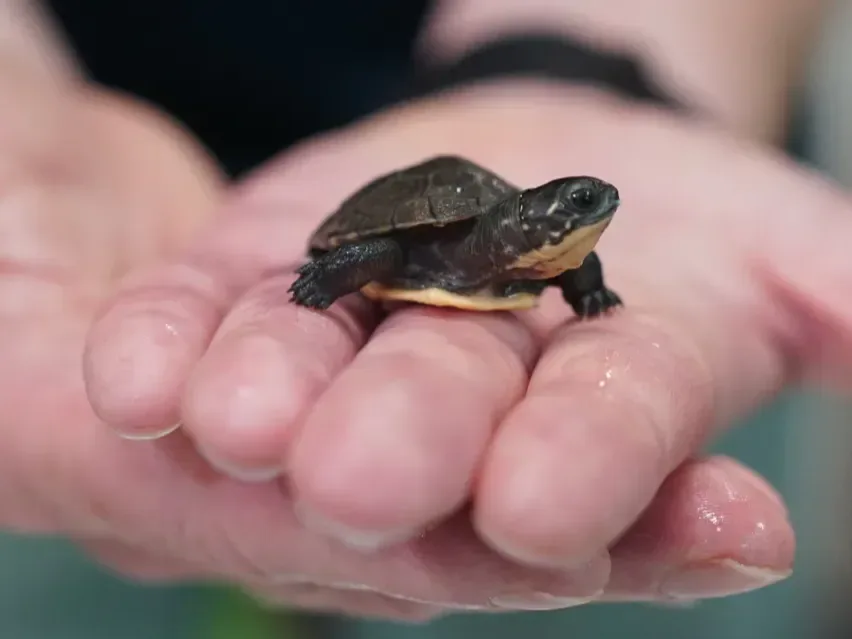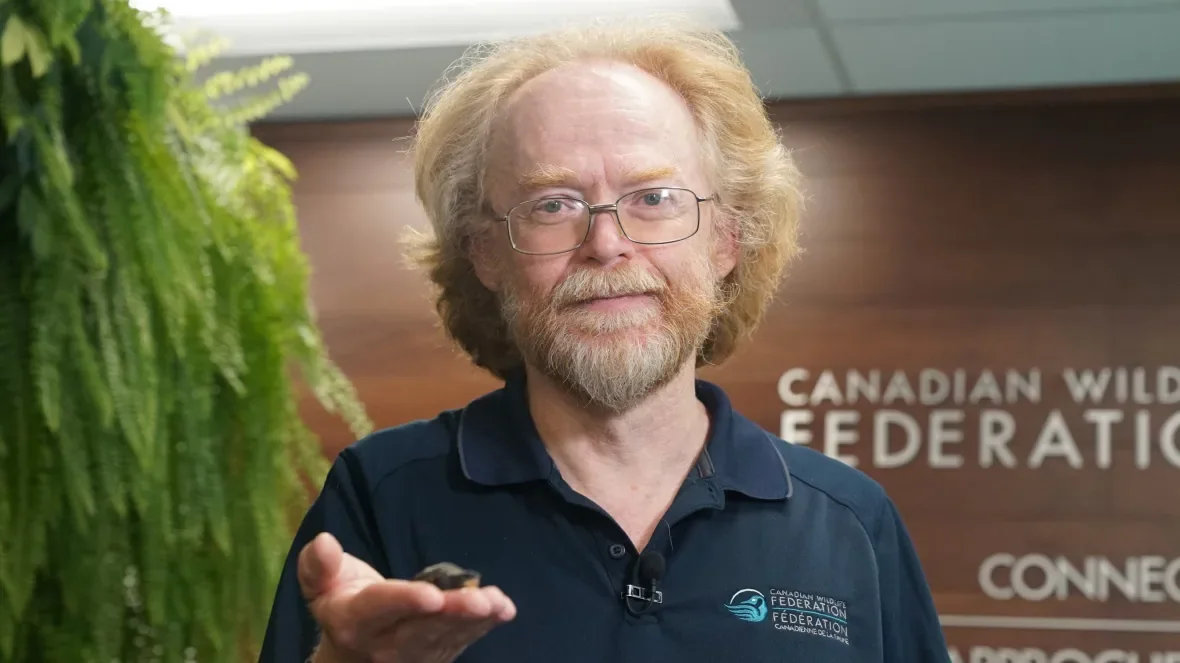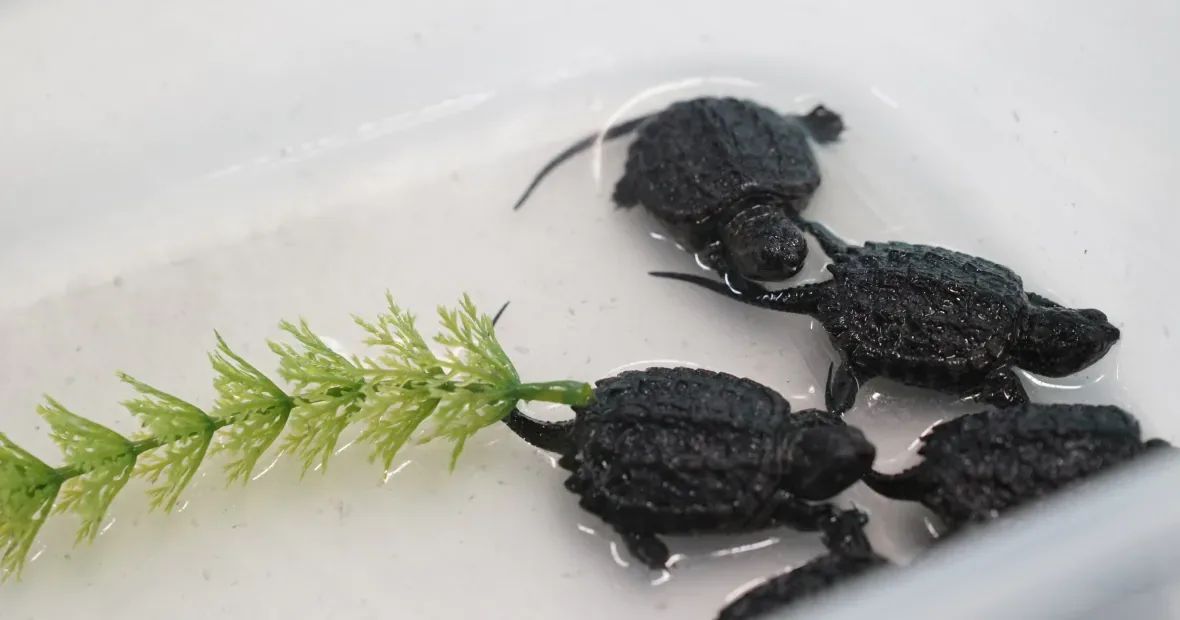
Saved by the shell: Tiny turtles given 2nd chance to survive in the wild
It's time for the baby turtles to begin their return to nature.
The Canadian Wildlife Federation has been helping the at-risk turtles hatch in the non-profit's suburban Ottawa offices after rescuing their nests from precarious places across eastern Ontario.
SEE ALSO: As urbanization grows, how do we keep turtles safe?
The federation bought another incubator this year, allowing them to accommodate 1,000 hatchlings, which develop faster in those controlled conditions than their cousins left in the wild.
Dave Seburn, a freshwater turtle specialist for the federation, said the program has seen a great response from people worried about species of concern, such as snapping and northern map turtles, and the endangered Blanding's turtle.
"Every year we get more phone calls and emails from people trying to help the turtles," Seburn said. "This year, virtually every single nest we collected was because people called us."

A Blanding's turtle hatchling that was incubated from a rescued nest at the Canadian Wildlife Federation's Ottawa office. (Matthew Kupfer/CBC)
Seburn said they get messages from landowners and others concerned about turtle nests found on construction sites, near roadways or even in manure piles, where they could be disturbed, damaged or targeted by predators.
Last year they rescued a large clutch of 65 of snapping turtle eggs found between third base and home plate at an Ottawa baseball diamond.
"There was just no way this nest would've survived on a baseball diamond, being trampled," Seburn said.
The rescued eggs are incubated for two months, and when a large section of the clutch has hatched, Seburn releases them into a wetland near the site where they were found. Many of those hatchlings are starting to be released now.
"If we didn't do this and if raccoons and other nest predators got 80 or 90 per cent of the nest, you're not taking care of the next generation," he said.

David Seburn, a freshwater turtle specialist with the federation, holds a baby Blanding's turtle that was incubated at their offices. (Matthew Kupfer/CBC)
Despite having outlasted dinosaurs, turtles have some disadvantages in environments reshaped by human activity.
Kristen Janke, a veterinarian with the Ontario Turtle Conservation Centre, said turtles live longer than many other species but also reproduce later in life.
"There are some species like rabbits where they can replenish that population within within a year, within one season. A turtle can take 20 or 30 years to do that. They really need our help," Janke said.

Snapping turtle hatchlings scuttle in a plastic container at the Canadian Wildlife Federation offices in Ottawa. (Matthew Kupfer/CBC)
The conservation centre in Peterbourough, Ont., deals with injured turtles from across the province. Their hatchery program also recovers eggs from injured females, some of which are X-rayed after they die in an effort to find fertilized eggs.
"Every single hatchling that we release that survives has the potential to make a huge impact on that population in the future," Janke said.
Janke said the centre's seeing an increase both in calls and in the number of turtles it incubates, hatches and prepares for release in the wild — up to 7,000 so far this year.

A northern map turtle that had just hatched at the Ontario Turtle Conservation Centre's hatchery. The centre also rears the turtles for almost a year to prepare them for release into the wild. (Ontario Turtle Conservation Centre/Supplied)
The Rideau Valley Conservation Authority is also working with the federation to add protection to turtle nests, installing a wooden frame with chicken wire-like mesh to keep predators out at certain sites.
Jennifer Lamoureaux, an aquatic and fish habitat biologist with the conservation authority, said helping the hatchlings is one part of protecting and restoring at-risk turtle populations.
"It's a long-term process. This isn't something we can do for the next five years probably and have a complete rebound in the species," she said.

A northern map turtle hatchling waiting for brothers and sisters in its clutch before it can be released to an Ottawa-area wetland by the Canadian Wildlife Federation. (Matthew Kupfer/CBC)
Aside from raccoons hungry for turtle eggs, turtles face major challenges when people build roads that cut through wetland areas.
Lamoureux said roads present a dual hazard by introducing fast-moving vehicles that can crush turtle shells, and disrupting the turtles' migration routes to mating sites, which can divide and isolate turtle populations and limit genetic diversity.
Turtle populations play an important role as an indicator of the health of wetlands, but also in maintaining the food web by eating smaller invertebrates, fish and algae, she said.
She encourages other citizen scientists to report and identify turtles they see in the region using platforms like iNaturalist to help scientists track changes in the local population.
WATCH: So you've spotted a turtle on the road, what do you do next?
The story, written by Matthew Kupfer, was originally published for CBC News.









